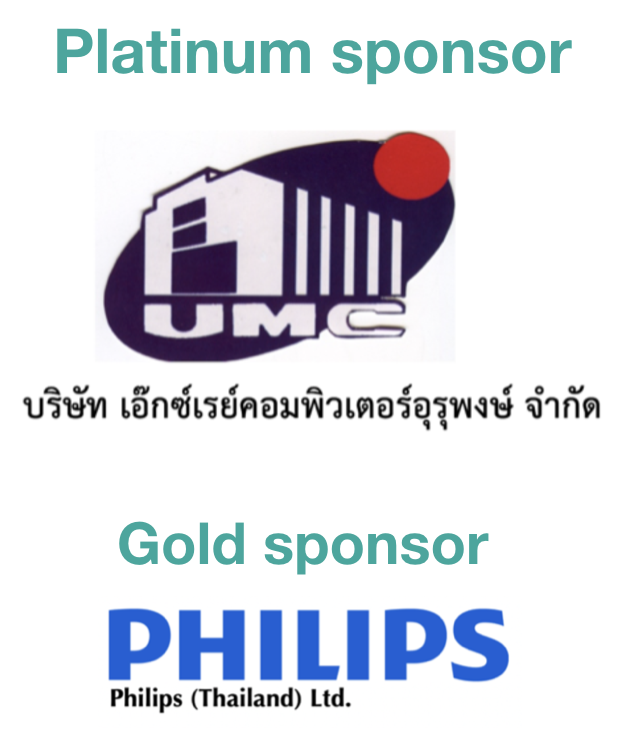The study of performances of an automated radiopharmaceutical administration for PET/CT patients at King Chulalongkorn Memorial Hospital
Keywords:
Automated administration, PET infusion systemAbstract
Introduction: An automated dispensing and infusion system for 18F-FDG can be simplified the process for manual injection preparation. Since dose calibrator is integrated into the system, this could reduce the radiation exposure to nuclear medicine technologists and nurses who perform injections. Objective: This study aimed to test the performance of the integrated dose calibrator of an automated radiopharmaceutical administration based on the dose calibrator quality control procedures. The output activity was compared with that measured by the dose calibrator used for the PET/CT imaging. Methods: A standard reference source of 137Cs was used to test the precision and accuracy of measurements and the reproducibility test. 18F-NaF was used to test the linearity of activity response with an initial activity of 40.73 mCi until activity decay to 0.1 mCi. The dose calibrator for PET/CT was used to measure activity output from this automated radiopharmaceutical administration. A paired t-test was used to determine statistically significant at a p-value of 0.01. Results: The integrated dose calibrator had a precision of 0.23% and an accuracy of 0.42%. In the test of repeatability, reproducibility of the measurements was within an acceptable limit of ±5%. The straight line fit to the activity response of 18F and physical half-life was calculated using the trend line at 109.73 minutes with the difference of 0.009% from the actual. Activity obtained from this automated radiopharmaceutical administration was compared to the activity measured by dose calibrator for PET/CT, and there was no statistically significant (p>0.01). Conclusion: The integrated dose calibrator of an automated radiopharmaceutical administration had passed the quality control tests. The injected activity in the range of 1 - 18 mCi was not different when measured with the dose calibrator for PET/CT.
Downloads
References
Niederkohr RD, Hayden SP, Hamill JJ, Jones JP, Schaefferkoetter JD, Chiu E. Reproducibility of FDG PET/CT image-based cancer staging and standardized uptake values with simulated reduction of injected FDG dose or acquisition time. Am J Nucl Med Mol Imaging 2021;11(5):428-442
Tahari AK, Chien D, Azadi JR, Wahl RL. Optimum lean body formulation for correction of standardized u ptake value in PET imaging, J Nucl Med 2014;55(9):1481-1484
Covens P, Berus D, Vanhavere F, Caveliers V. The introduction of automated dispensing and injection during PET procedures: a step in the optimization of extremity doses and whole-body doses of nuclear medicine staff. Radiat Prot Dosimetry 2010;140(3):250–258
Schleipman AR, Gerbaudo VH. Occupational radiation dosimetry assessment using an automated infusion device for positron-emitting radiotracers. J Nucl Med Technol 2012;40:244–248.
Lecchi M, Lucignani G, Maioli C, Ignelzu G, Sole AD. Validation of a new protocol for 18F-FDG infusion using an automatic combined dispenser and injector system, Eur J Nucl Med Mol Imag 2012;39:1720–1729.
IAEA-TECDOC-602. Radionuclide dose calibrators. In: Quality control of nuclear medicine instruments 1991. Vienna: IAEA, 1991:17-34.
Cole EL, Stewart MN, Littich R, Hoareau R, Scott PJ. Radiosyntheses using Fluorine-18: the art and science of late stage fluorination, Curr Top Med Chem 2014;14(7):875-900.
Medrad intego. PET infusion system operation manual. Bayer Medical Care Inc. Indianola, Pennsylvania, 2018
Boellaard RB, Delgado-Bolton R, Oyen WJG, Giammarile F, Tatsch K, Eschner W, et al. FDG PET/CT:EANM procedure guideline for tumour imaging: version 2.0, Eur J Nucl Med Mol Imaging 2015;42:328–354

Downloads
Published
How to Cite
Issue
Section
License
Copyright (c) 2022 The Thai Society of Radiological Technologists

This work is licensed under a Creative Commons Attribution-NonCommercial-NoDerivatives 4.0 International License.
บทความที่ได้รับการตีพิมพ์เป็นลิขสิทธิ์ของสมาคมรังสีเทคนิคแห่งประเทศไทย (The Thai Society of Radiological Technologists)
ข้อความที่ปรากฏในบทความแต่ละเรื่องในวารสารวิชาการเล่มนี้เป็นความคิดเห็นส่วนตัวของผู้เขียนแต่ละท่านไม่เกี่ยวข้องกับสมาคมรังสีเทคนิคแห่งประเทศไทยและบุคคลากรท่านอื่น ๆในสมาคม ฯ แต่อย่างใด ความรับผิดชอบองค์ประกอบทั้งหมดของบทความแต่ละเรื่องเป็นของผู้เขียนแต่ละท่าน หากมีความผิดพลาดใดๆ ผู้เขียนแต่ละท่านจะรับผิดชอบบทความของตนเองแต่ผู้เดียว




